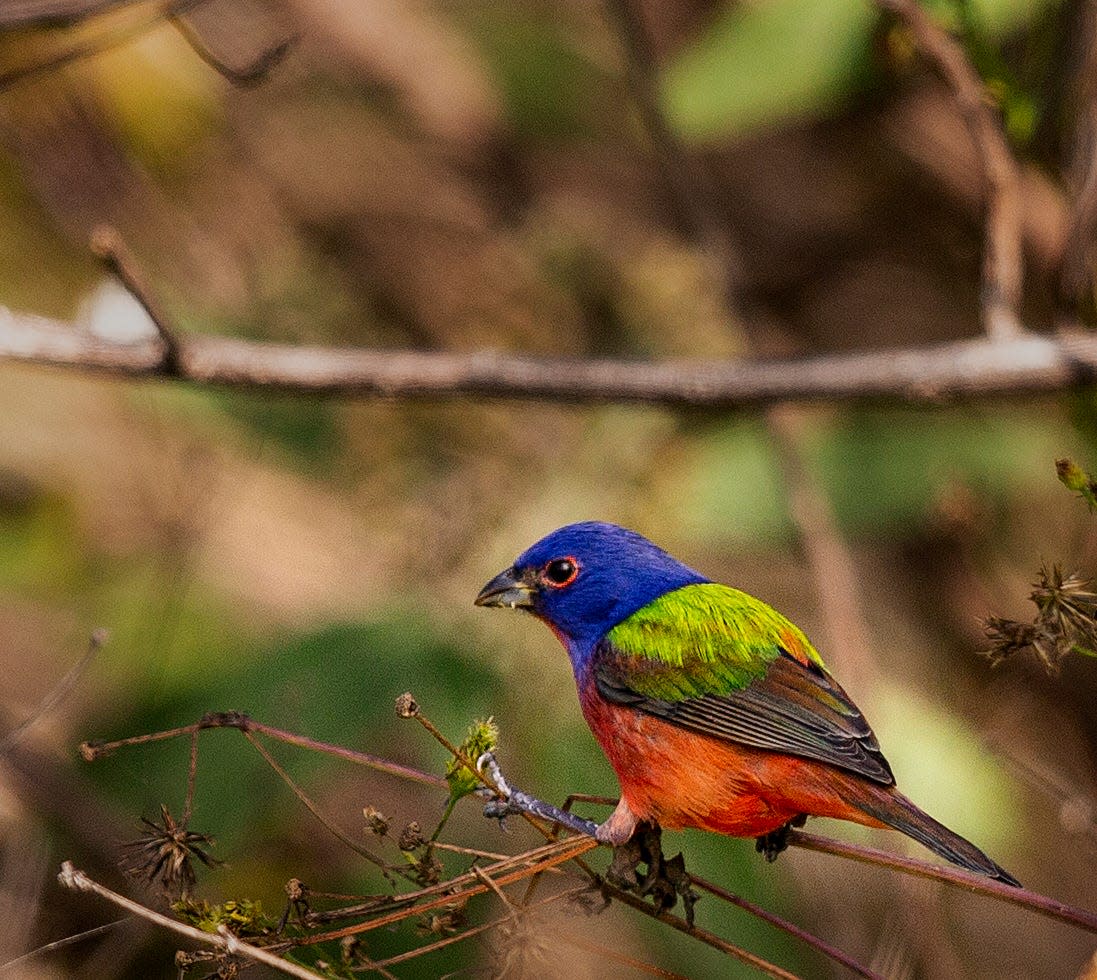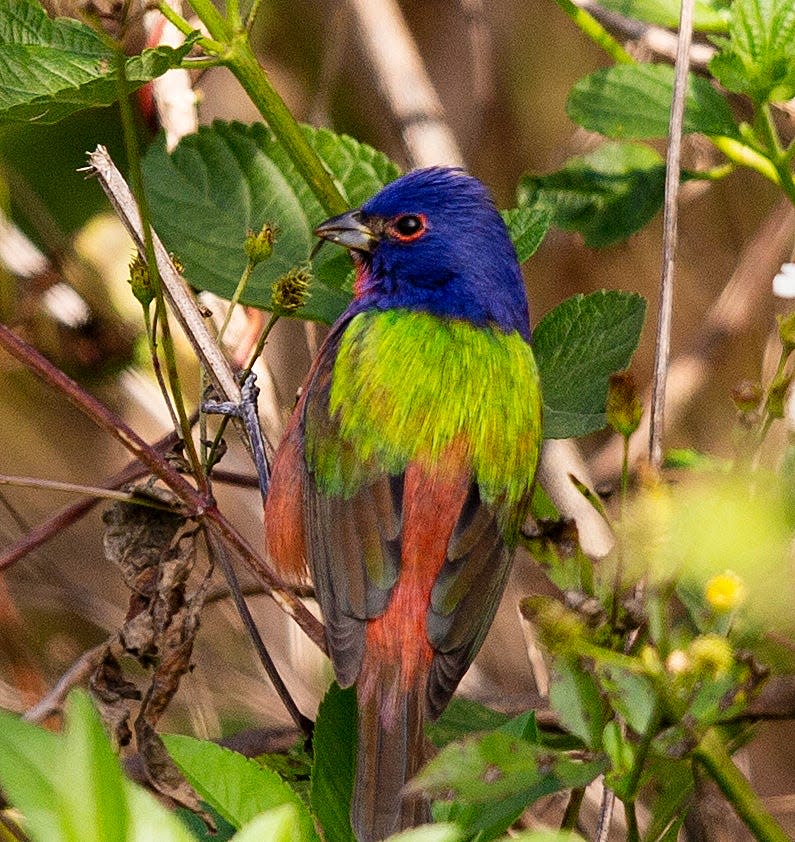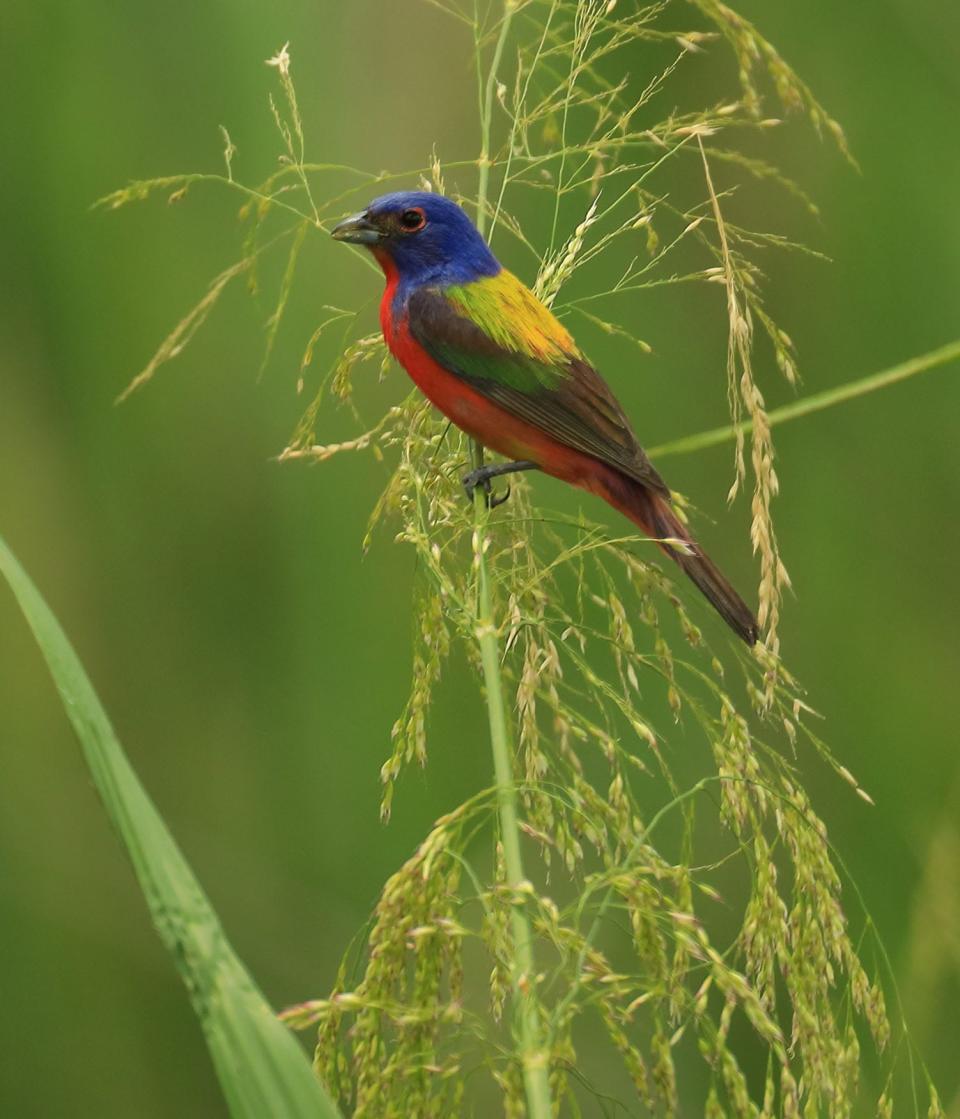Campbell Vaughn: This bird lover's waiting on a wing and a prayer to see elusive bunting

I am on a quest and it really isn’t that big of a thing. It isn’t to see Sasquatch or Nessie, but to witness with my own eyes a little songbird that has eluded me for all these years. I just need to see one.
I love to feed the birds in my yard. We have a great sitting area on my back patio with a clear view of the three bird feeders I constantly fill with my special blends of birdseed. My feathered friends are gluttonous. They eat enough bird seed to sink a ship. I get plenty of cardinals, wrens, woodpeckers and so many doves you could have a hunt.

Occasionally I will get a rare bird to stop by like a rose-breasted grosbeak, which I spotted out the bathroom window about two years ago. The suet feeder has really brought in a different group of birds as well. I even had a catbird come the other day. I have an affection for catbirds because, when we were kids, my grandfather had one that followed him around in the yard eating the worms he would dig up when turning his compost pile. The catbird would roost on the top of the pitch fork when Gandi would be resting.
Only made in Georgia: It's Vidalia onion season again and the crops are plentiful
Time again for yard work: Augusta, here's when to fertilize, when to mow, when to water
The one that makes me jealous when I get word of a sighting is the painted bunting. Susie in our office has two pairs that frequent her feeders and I was over at her house last week hoping for them to swing by with no luck. My buddy John in Thomson (I was secretly trying to spot one before he did) sent me a picture yesterday of a painted bunting in a tree that I planted in his yard years ago. His 50th birthday is next week, so happy birthday to him.

We have some awesome colorful birds with the reds of the cardinals, the blues of the eastern bluebird and yellows of the American goldfinch, but the painted buntings are kings of the Southeast. If you needed a bird for a coloring book, the painted bunting is it. The male’s head is blue with a ring of red around the eyes. The breast from under the beak to the tail is red and the wings and back are a mix of yellow, green, reddish orange, purple and bluish gray. They look like they should come from Costa Rica, not Johnston, S.C.
According to the range map that The Cornell Lab posts on its All About Birds webpage, the painted buntings should be living within about five blocks of my house. All About Birds shows that the range of these colorful avians is south of I-20 and I-85 but has a significant presence in Florida, Louisiana, Arkansas, Oklahoma, Texas, down into Mexico and all the way to the Panama Canal.

A couple of interesting migration facts about the painted bunting are that the eastern population molts on its breeding grounds before heading south for the winter while the western population of painted buntings migrate to northern Mexico to molt (and I would assume have a couple of cervezas) before traveling farther south for the winter. This western population molt before migration is common for waterfowl, but very rare for songbirds.
Although the practice has been curbed over the years through conservation efforts, painted buntings are often caught to be sold as caged birds. I don’t understand people sometimes.
All this pretty spring weather and birds zipping around attracting mates and gathering food for newly hatched babies keep my passion for feeding my feathered friends in full tilt. If they keep eating the way they do, I may have to get a second job. Either way, I am still keeping my eye out for that bunting that keeps eluding me.
Reach Campbell Vaughn, the UGA Agriculture and Natural Resource agent for Richmond County, by e-mailing augusta@uga.edu.
This article originally appeared on Augusta Chronicle: Campbell Vaughn: Bird lover waits on wing and a prayer to see bunting

